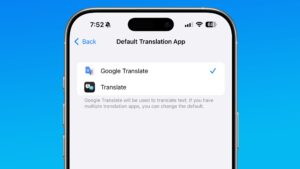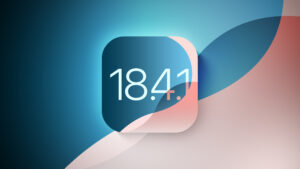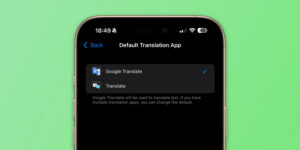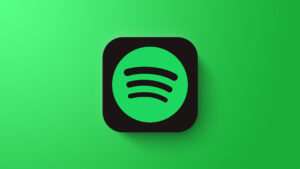Gatekeeper and notarization in Sequoia
There has been a recent outcry over one quietly mentioned change coming in macOS Sequoia, making it harder to run apps that haven’t been notarized by Apple. As there’s some confusion as to exactly what’s going on, this article explains how this should work, and what benefits notarization brings in return for this added inconvenience.
How it used to work
Although Apple has required developers to notarize their macOS apps for several years, starting back in Mojave 10.14.5, it has so far done little to enforce this requirement, except in special cases such as kernel extensions. The first of my free apps to be notarized was LockRattler, back at the end of July 2018, over six years ago, when Apple referred to making notarization obligatory at some time in the future.
In Sonoma and earlier, any app that hasn’t been notarized, but has been quarantined because it has been downloaded from the internet (or a similar cause), won’t open first time from a normal double-click. Instead the user has to select the Open command from the Finder’s contextual menu, resulting in a dialog giving the user the choice of opening the app in spite of it not being notarized and ‘checked for malicious software by Apple’. Once that first run has been completed successfully, no further prompts result, and the app runs normally thereafter.
How Sequoia will work
Changes are only enforced on apps that have been quarantined because of the way they arrived on that Mac. If an app doesn’t have a quarantine extended attribute with the quarantine flag set, although notarization is still checked by Gatekeeper, the app is allowed to run without any additional action by the user. This also allows you to continue to build your own apps locally, sign them using ad hoc certificates, and run them as before. Where this could get more inconvenient is with modes of transfer such as AirDrop that do put apps into quarantine, although they may not have been outside your local network.
Gatekeeper will then refuse to run for the first time those apps that aren’t notarized, if they’re in quarantine. The only way that you’ll then be able to launch an unnotarized app is by adding it to a list of exemptions using Privacy & Security settings. That’s performed on an individual basis, per app, as Apple has now announced to developers.
None of this applies to apps supplied by Apple, or third-party apps supplied through the App Store, which are signed by Apple, not notarized, and aren’t quarantined.
There are two main ways to circumvent this process.
You could strip the quarantine extended attribute before trying to run the app for the first time. This is a potentially dangerous workaround, as it bypasses first run checks that could spot malware. For those of us who often transfer our own apps for testing using AirDrop, it’s easy to drop them into a folder, Zip that, then on the recipient Mac strip the quarantine xattr before unZipping the archive. My utility Cormorant can make that even simpler. If you were to opt to do that, you must be absolutely certain of the provenance of the app you’re transferring.
For those who have test systems that frequently need to run unnotarized apps, another potential solution is to disable Gatekeeper on them. Perhaps anticipating a move to do that, Apple has changed how this can be done, making it a two-step procedure, in which you first allow the disabling of checks, then in Privacy & Security settings control how that is implemented. Apple encourages those who need to do this to use installed profiles instead, or handle it through MDM payloads. This has been explored in detail by Brandon Dalton in his account of these changes.
I’m frequently surprised to learn how many Mac users have disabled Gatekeeper checks in the past and forgotten to reinstate them, only to be reminded when they later run SilentKnight for the first time.
There’s also a third method that’s little-known, although in the early years of notarization it was practised widely, and that’s notarizing other developers’ apps. Apple has made it clear that submission of an app for notarization doesn’t have to be performed by its developer, the owner of the certificate used to sign the app with, but anyone with a current developer account with Apple can do so provided they follow the correct process. This is most appropriate for those in enterprise and organisations who need to use third-party products that aren’t yet notarized by their developer.
Why notarization?
Superficially, notarization brings two obvious benefits, in apps being checked for malware by Apple before they’re issued a notarization ticket, and in the ‘hardened’ runtime they’re required to adopt to qualify for notarization. Those remain controversial; in the past some malware was apparently notarized, although that seems to have resulted in more stringent checks being applied. But those overlook its greatest benefit.
Code-signing used to be considered an effective way of ensuring the integrity and provenance of executable code, but has now become too low a bar to be effective. It’s all too easy to strip a signature and resign code, and in any case acquiring developer certificates is neither expensive nor difficult. Although Apple does revoke certificates promptly once their abuse is detected, the interval between first abuse and revocation is often sufficient for most who develop malware. Once one certificate has been revoked, it’s then easy to move on and use another, always keeping one step ahead of Apple.
In recent versions of macOS, executable code is recognised and managed using its cdhashes, a tree of hashes of its components within a bundle, for instance. A notarization ticket contains cdhashes that have been accepted by Apple as a record of that app when it underwent notarization. To verify the integrity and authenticity of any notarized code, all macOS has to do is compare freshly computed cdhashes against those provided in the app and its ticket, and against those in Apple’s notarization records. This presents a much higher bar to those trying to masquerade as or tamper with notarized executable code.
By making it harder for a user to run unnotarized code, the chances of that user inadvertently running malicious code are considerably reduced.
Further reading
Notarization for developers (Apple)
How does Sonoma check an app before launch?



